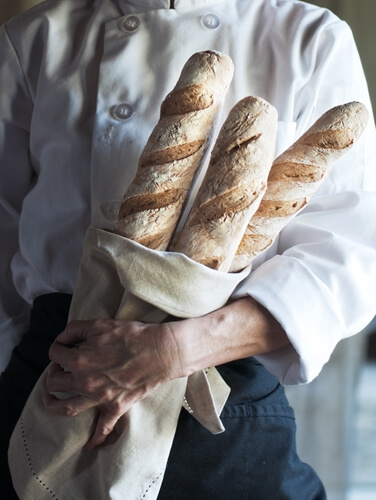Baguette Breakdown

Cooking with yeast might seem like a hefty culinary challenge, but when you’re learning how to bake bread it’s an essential ingredient. The art of making bread has the reputation for being time consuming and challenging, but it’s actually much easier than you think. With a little practice, and perhaps the help of some online baking classes, you’ll be whipping up wholesome loaves of fresh bread before you know it. Baguettes are, of course, the quintessential loaves to be served up with a hearty lunch or dinner. They can be used to make sandwiches, sliced up and buttered as an appetizer, or dunked in soups and stews to soak up broth. Here’s a quick introduction to this versatile bread to help you get started:
What defines a baguette?
A baguette is as a long, skinny loaf of French bread. The standard baguette is over 2 feet long, has a crisp crust and uses a specific type of dough. The traditional French baguette is made from yeast, water, salt and wheat flour. Though these thin loaves of bread were popular in France a century prior, the did not come into use until 1920.
The history of French bread
The availability of bread decreased dramatically around the time of the French Revolution, leading to the famous Marie Antoinette quote, “let them eat cake.” After the revolution, the republic put restrictions on how bread can be made, making the pedestrian food more accessible to the public. Later, Napoleon’s government issued standards for French breads, demanding the implementation of specific ingredients and baking methods. This was particularly important in regard to the milling of quality wheat flour and kneading dough. Governments that followed the Napoleonic era made additional mandates about shape and size of French breads. As agricultural technology advanced, making it possible to harvest wheat more efficiently, quality bread became more available on a massive scale. Today, wheat is the most cultivated grain in the world, much due to its essential role in the creation of bread.
French bakers take an enormous amount of pride in their baguettes. Various baking methods, ingredient ratios, cooking times and other variables gives each artisan’s bread a unique taste. Non-French variations of the baguette have become popular around the world and often use different types of flour or contain additives. Banh mi, for example, is the Vietnamese version and usually contains rice flour.


